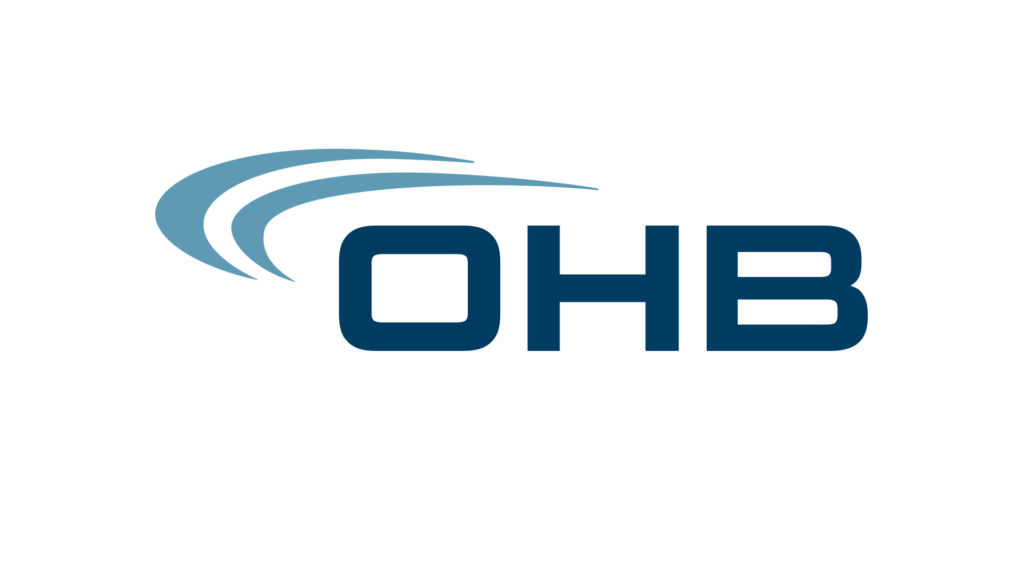Emotional engagement is the secret ingredient that turns a group of coworkers into a high-performing, resilient team. Yet, as hybrid and remote work reshape the modern workplace, many organizations still struggle with how to improve emotional engagement in teams. Why do so many traditional engagement programs fall short, and how can forward-thinking companies like Neroia revolutionize team connection using AI-driven, personalized experiences? This article unpacks the science, the pitfalls, and the practical steps—opening a new chapter for emotional engagement that’s fit for 2025 and beyond.
1. Understanding Emotional Engagement and Its Business Impact
What Emotional Engagement Really Means
Emotional engagement in teams is more than just job satisfaction or hitting targets. It’s the deep, psychological connection employees feel to their work, their colleagues, and the organization’s purpose. According to Gallup, emotionally engaged employees show genuine enthusiasm, take initiative, and are committed to the team’s success—not just their own. They feel seen, valued, and part of something bigger.
This connection goes beyond surface-level perks or paychecks. Instead, it’s rooted in trust, shared values, and authentic relationships. Employees who are emotionally engaged are invested in both their personal growth and the collective well-being of their team.
Key Benefits for Performance, Retention and Well-Being
Why does emotional engagement matter so much? Research consistently shows that teams with high emotional engagement experience:
- Higher productivity and innovation: Engaged teams solve problems faster and bring creative solutions to the table.
- Lower turnover and absenteeism: Employees who feel connected are less likely to leave and more likely to show up fully.
- Better well-being: Emotional engagement reduces stress and burnout, supporting mental health.
- Stronger collaboration: Engaged team members communicate openly and support each other, even in high-pressure situations.
“Engaged employees produce better business outcomes than other employees—across industry, company size, and nationality, and in good economic times and bad.”
—Gallup Workplace Research
These benefits are not just theoretical. Companies that prioritize emotional engagement consistently outperform competitors in retention, profitability, and customer satisfaction.
2. Diagnosing Your Team’s Current Engagement Level

Survey Tools, KPIs and Pulse Checks
Before you can improve emotional engagement in teams, you need to know where you stand. Leading organizations use a blend of quantitative and qualitative tools to gauge engagement:
- Pulse surveys: Short, frequent surveys that capture real-time sentiment on key drivers like trust, recognition, and inclusion.
- Key performance indicators (KPIs): Metrics such as retention rates, absenteeism, and peer recognition rates signal engagement health.
- Employee Net Promoter Score (eNPS): Measures how likely employees are to recommend the organization to others.
For example, the Gallup Q12 survey is widely used to assess engagement through questions about clarity, recognition, and growth opportunities. Combining these tools with regular one-on-ones helps managers spot trends and act quickly.
Reading the Hidden Signals in Daily Interactions
Numbers tell part of the story, but emotional engagement often reveals itself in day-to-day behaviors:
- Are team members volunteering ideas and supporting each other?
- Do meetings feel lively and inclusive, or flat and transactional?
- Are people celebrating wins, both big and small?
Leaders who observe with empathy and curiosity can spot hidden disengagement—like withdrawal, cynicism, or lack of initiative—before it becomes a bigger issue. Informal check-ins, open Slack channels, and even casual coffee chats (virtual or in-person) offer valuable insights.
3. Overcoming Common Barriers to Emotional Engagement
Recognition Gaps, Communication Breakdowns and Micromanagement
Even the most well-intentioned engagement programs can stumble over common roadblocks:
- Recognition gaps: When achievements go unnoticed, motivation drops.
- Communication breakdowns: Inconsistent or top-down messaging leaves teams confused and disconnected.
- Micromanagement: Excessive control erodes trust and stifles creativity, especially in hybrid environments.
According to WebMD Health Services, employees increasingly feel detached, unclear about their roles, and less confident that someone at work cares about them. These issues are magnified in remote or hybrid settings, where spontaneous interactions are rare.
Creating Psychological Safety as a Foundation
The foundation for emotional engagement is psychological safety—a climate where team members feel safe to speak up, share ideas, and admit mistakes without fear of judgment. Psychological safety enables risk-taking, learning, and honest feedback.
“A psychologically safe workplace is one where people feel they can be themselves and won’t be embarrassed, rejected, or humiliated for speaking up.”
—Andrea Herron, WebMD Health Services
Building this foundation requires leaders to show vulnerability, encourage open dialogue, and respond constructively to feedback.
4. How to Improve Emotional Engagement in Teams: 10 Proven Tactics
Fostering Open, Two-Way Communication
Open communication is not just about sharing updates—it’s about creating space for honest dialogue and active listening. Teams thrive when every member feels their voice matters.
- Hold regular team huddles and one-on-ones.
- Use anonymous feedback tools to surface hidden concerns.
- Encourage questions and idea sharing in every meeting.
Building a Culture of Recognition and Appreciation
Recognition fuels emotional engagement. Celebrate individual and team achievements, both publicly and privately. Make appreciation a daily habit—not just an annual event.
- Implement peer-to-peer recognition programs.
- Share shout-outs in team channels or meetings.
- Celebrate milestones, from project completions to personal growth.
Aligning Roles with Purpose and Strengths
When employees understand how their work connects to the bigger picture and can use their strengths daily, engagement soars.
- Clarify team and individual goals.
- Connect tasks to organizational mission and values.
- Offer stretch assignments that align with personal interests.
Common Barriers and Solutions to Emotional Engagement
5. Building Leadership Skills that Foster Engagement
Coaching Management Style and Empathy
Managers are the linchpin of emotional engagement. A coaching management style—focused on guidance, support, and empathy—helps employees grow and feel valued. Great managers:
- Ask open-ended questions about goals and challenges.
- Listen actively and show genuine care.
- Give constructive feedback and recognize effort.
Empathetic leadership means understanding each team member’s unique situation and adapting support accordingly.
Developing Managers as Engagement Champions
Managers should be trained and empowered to champion engagement. This includes:
- Learning to spot early signs of disengagement.
- Facilitating regular check-ins and conversations.
- Modeling vulnerability and openness.
Organizations that invest in leadership development see stronger engagement and better business outcomes.
“Managers drive 70% of the variance in team engagement and make or break the employee experience.”
—Gallup Workplace Research
6. Embedding Recognition and Feedback into Daily Work
Peer-to-Peer Programs and Public Celebrations
Recognition shouldn’t be reserved for annual reviews. Make it part of daily life:
- Launch peer-to-peer recognition tools where colleagues can nominate each other.
- Celebrate wins in team meetings, newsletters, or Slack channels.
- Organize appreciation events—virtual or in-person.
Designing Stretch Goals and Growth Opportunities
Growth fuels engagement. Encourage employees to set ambitious, meaningful goals aligned with their strengths and interests.
- Collaborate on development plans in one-on-ones.
- Offer learning opportunities, mentorship, and cross-functional projects.
- Use micro-events (like group yoga or skills workshops) to blend social connection with growth.
Ways to Embed Recognition and Feedback
- Daily shout-outs in team chat
- Monthly “win” celebrations
- Peer-nominated awards
7. Tracking Progress and Keeping Momentum Alive

Setting Engagement OKRs and Regular Reviews
Measuring progress keeps engagement efforts on track. Set clear Objectives and Key Results (OKRs) around emotional engagement, such as:
- Increasing peer recognition rates by 20%
- Raising pulse survey scores on trust and inclusion
- Reducing turnover in key teams
Review these metrics regularly and adjust strategies as needed.
Sustaining Engagement in Hybrid and Remote Teams
Hybrid and remote work can make emotional engagement more challenging—but also more crucial. Teams must work harder to stay connected and motivated across distances.
- Use integrated platforms (like Neroia) to coordinate engagement activities.
- Schedule regular virtual check-ins and social events.
- Monitor engagement data for early warning signs of disengagement.
Steps to Sustain Engagement Remotely
- Choose an AI-driven platform that personalizes engagement.
- Integrate with existing tools (Slack, recognition apps, pulse surveys).
- Curate regular micro-events for small groups.
- Collect anonymized feedback and adjust activities.
- Celebrate progress and iterate on strategies.
Why Traditional Engagement Initiatives Fall Short in Hybrid Teams
Despite best intentions, many traditional company-organized engagement programs struggle to create genuine emotional engagement—especially in hybrid and remote settings. Here’s why:
- Impersonal activities: Large, one-size-fits-all events rarely foster deep connections or trust.
- Hybrid isolation: Remote workers can feel left out or disconnected from in-person activities.
- Planning friction: Organizing meaningful events is time-consuming and often falls to already-busy HR teams.
- Lack of authentic connection: Forced fun or generic programs don’t create real bonds or psychological safety.
What’s needed is a shift from generic, top-down initiatives to organic, personalized experiences that meet employees where they are.
How Neroia’s AI-Driven Micro-Events Transform Emotional Engagement
Neroia is reimagining how to improve emotional engagement in teams for the modern workplace. By leveraging artificial intelligence, Neroia curates small-group activities tailored to individual interests, schedules, and well-being goals—breaking silos and cultivating authentic relationships.
AI-Powered Personalization and Seamless Integration
Neroia’s platform effortlessly discovers shared interests among employees and recommends micro-events—like yoga sessions, cycling meetups, or cultural exchanges—for groups of three to four. This approach ensures every interaction feels relevant and engaging, not forced.
The platform integrates with existing tools such as Slack, recognition systems, and pulse survey apps. This means employees can join activities, give feedback, and celebrate wins—all within their daily workflow.
Real-World Impact: OHB Pilot Examples
Neroia’s approach isn’t just theoretical. In pilot programs with companies like OHB, AI-orchestrated micro-events such as yoga classes and company runs brought together colleagues who might never have connected otherwise. These small, informal gatherings sparked new friendships, improved well-being, and boosted team morale—without the hassle of manual organizing.
All participation data is anonymized, ensuring privacy while providing HR with meaningful analytics on engagement trends and team well-being.
“Neroia’s AI-driven micro-events made it easy for us to connect authentically, even across departments and locations. The yoga sessions and company runs became the highlight of our week.”
—Pilot participant, OHB
Future-Proofing Engagement: 2025 and Beyond
Neroia’s model is perfectly aligned with the latest trends in employee engagement:
- Psychological safety: Small, trusted groups make it easier for everyone to speak up and be themselves.
- Empathetic leadership: Managers can use anonymized insights to better support their teams.
- Well-being focus: Activities are tailored not just to professional interests but to holistic health and happiness.
By replacing generic, top-down programs with personalized, AI-curated interactions, Neroia helps organizations build vibrant, emotionally engaged teams—no matter where employees work.
How Neroia Supports Emotional Engagement in Hybrid Teams
- Curates micro-events based on real interests and availability
- Integrates with Slack, recognition, and survey tools
- Uses anonymized analytics to guide engagement strategies
- Encourages organic, informal connections across silos
- Prioritizes privacy and employee-centricity
Conclusion: Building the Future of Emotional Engagement
Improving emotional engagement in teams is no longer about grand gestures or generic activities. It’s about creating a culture where every employee feels valued, connected, and empowered to contribute authentically. The future belongs to organizations that leverage technology not to replace human connection, but to make it easier, more personal, and more meaningful.
Neroia stands at the forefront of this movement, helping companies break down silos, nurture real relationships, and boost well-being—one AI-curated micro-event at a time. For teams ready to thrive in 2025 and beyond, embracing how to improve emotional engagement in teams with Neroia is the smartest, most human-centric step forward.
“When employees feel emotionally invested, they don’t just show up—they contribute, innovate, and stay committed.”
—CoffeePals Blog
Ready to revolutionize your team’s emotional engagement? Discover how Neroia can help your organization effortlessly build authentic connections and transform workplace culture.




